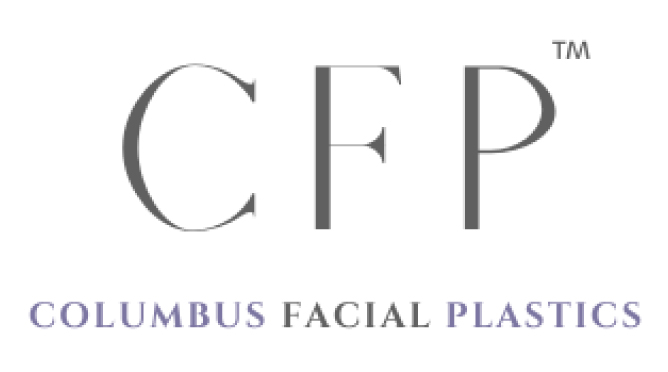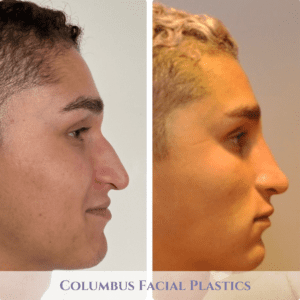Board-Certified Rhinoplasty Expertise in Columbus, Ohio
At the heart of Columbus Facial Plastics, Dr. Stephen Nogan, a double board-certified facial plastic surgeon, brings a wealth of expertise and a meticulous eye for aesthetics and structure to every rhinoplasty procedure. With advanced training and deep knowledge in the latest rhinoplasty techniques, Dr. Nogan is adept at creating natural, harmonious results that align with each patient’s unique facial structure and personal aspirations.
Patient-Centric Approach to Rhinoplasty Recovery
Emphasizing a collaborative and compassionate approach, Columbus Facial Plastics takes pride in guiding patients through a predictable and comfortable recovery process. We firmly believe that education, clear communication, and support are the pillars of a successful rhinoplasty journey and are dedicated to your care every step of the way.
Visualizing the Possibilities: Our Rhinoplasty Reviews and Results
Our clinic’s commitment to excellence in rhinoplasty is evident by the extensive number of real patient reviews for Columbus Facial Plastics on Google, Realself and Ohio State’s physician portal. There is no better compliment to our clinic than when one of our patients is willing to share and educate potential future patients. In addition to real reviews, we have a collection of before and after photographs available for viewing during your private, in-depth consultation that also showcase the transformative effects of Dr. Nogan’s precise and tailored approach.
Areas of Improvement
Nose
Results will last
This is a permanent change
Recovery Time
1 week to return to normal activities.
Recovery Process
While the nose may appear swollen, patients typically can return to work, school or routine activities one week following surgery and can resume light exercise in eight to 10 days. Bruising can occur but usually is resolved by one week.
Tailored Results for Every Individual
Dr. Nogan’s approach to rhinoplasty is as unique as the individuals who trust him with their care. Through detailed consultations, he crafts personalized surgical plans that balance medical safety, functional improvement, and desired aesthetic changes – all while ensuring a natural-looking outcome.
Demystifying Rhinoplasty: Clarity and Education
Misconceptions around rhinoplasty can lead to apprehension. By providing truthful, comprehensive information, Dr. Nogan and his team demystify the rhinoplasty process. From addressing common questions to discussing the nuances of aftercare, Columbus Facial Plastics establishes an environment of trust and informed decision-making.
Comprehensive, Patient-Focused Rhinoplasty Instruction
A successful outcome involves thorough pre- and post-operative education. Our detailed rhinoplasty instruction is designed not only to prepare you for the surgical experience but also to empower you in your post-procedure care, ensuring a seamless transition back to your daily life.
Exceptional Surgical Expertise and Care
Under the skilled hands of Dr. Stephen Nogan, Columbus Facial Plastics is a leader in facial plastic surgery. Dr. Nogan’s credentials and consistent patient satisfaction reflect his unwavering devotion to achieving the highest level of care. By selecting Columbus Facial Plastics, you choose an unmatched level of expertise and quality in rhinoplasty.
Call 614-436-8888 today to schedule your detailed consultation and take the first step in realizing the impeccable rhinoplasty results that embody both beauty and functional integrity.



